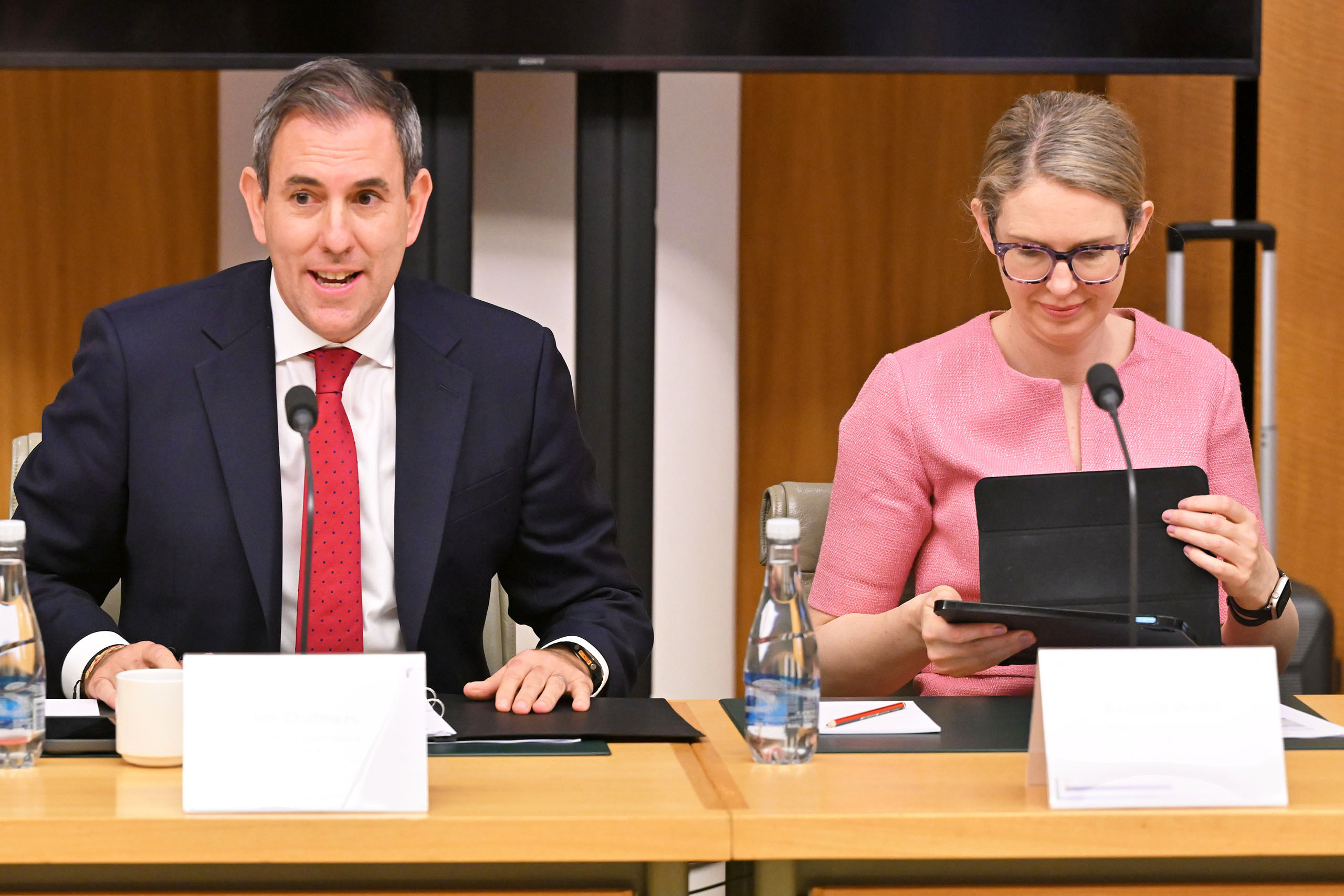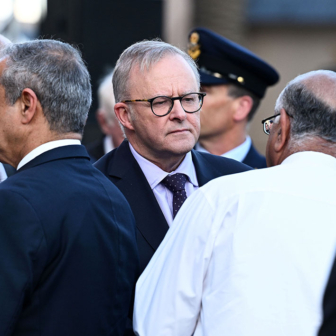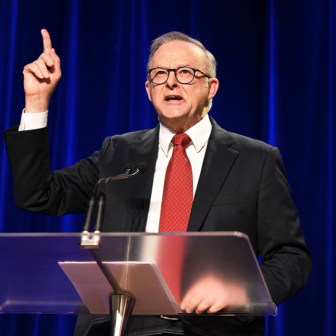Of all the economic problems proclaimed in the run-up to next week’s economic summit, the most alarming is that business investment is very weak. “Business investment has fallen notably over the past decade,” declares the Productivity Commission, and the fall is contributing to Australia’s “lacklustre” productivity performance. Citing the commission, former Australian Financial Review editor Michael Stutchbury says that “investment such as in factories, machinery and equipment has declined to close to post early-1990s recession lows. Outside mining, private investment has fallen by three percentage points of GDP since 2009 even with all the new solar and wind farms.”
Along with flat productivity, stagnant income per head and slow output growth, the fall in business investment surely suggests the Australian economy is in big trouble. And from that failure much follows. If business investment is low, little wonder productivity growth is slow, and output growth is below trend.
The obvious remedy is to increase the returns on investment. One way to do that is to cut the rate of company tax. Another might be to change the calculation of company tax so that investment can be deducted from taxable profits. As the Financial Review reported recently, the Productivity Commission would recommend more generous immediate tax deductions for new investment “as a way of boosting non-mining business spending that has declined over the past fifteen years.”
If company tax is cut when the federal budget is already in deficit, a prudent government would balance the revenue loss by a spending cut or a tax increase somewhere else. This is a reason to increase the GST, for example. The Productivity Commission is all for lower company taxes, as is the Financial Review.
But there is a puzzle here, because the volume of non-mining business investment measured by the ABS capital expenditure survey has never been higher than it is now. It is one-fifth higher than it was in 2009, and 6 per cent higher than the previous peak reached before Covid hit in 2020. It’s true that the total volume of business investment (including mining) is less than it was during the mining investment boom of 2010–15, but it is well up from the subsequent trough in 2020. Overall, the volume of business investment measured in the national accounts has increased by more than a third since the 2020 slump.
Nor is business investment low as a share of GDP. The volume of business investment shown in the national accounts is less than it was during the mining boom as a share of real GDP but markedly higher than the average share of the last forty years. Comparing the volume of business investment to GDP, business investment is about double what it was coming out of the recession of the early nineties. (Comparing nominal business investment to nominal GDP just picks up the huge gain in iron ore prices, which boosted nominal GDP but had little impact on the price of investment goods.)
If there is a problem with business investment in Australia we would expect to see it also reflected in foreign direct investment in Australia. This should be especially so if the problem is high company tax. Australia’s dividend imputation system means that changes in company tax primarily affect overseas-owned businesses. For Australian-owned businesses, an increase or decrease is mostly offset by a more or less equal but opposite change in imputation credits for shareholders’ personal income tax, leaving the total return for shareholders unaffected.
Far from falling, though, foreign direct investment in Australia is very strong indeed. It was $82 billion last year, exceeded in the last thirty-five years only by $99 billion in 2022.
So why has GDP growth been so slow? No puzzle here. Growth was supposed to be slow. It was exactly the result the government, Treasury and the Reserve Bank wanted, and rightly so. Three years ago consumer price inflation reached 7.8 per cent, more than three times the midpoint of the 2.5 per cent target. The Reserve Bank sharply increased interest rates from just above zero in March 2022 to 4.35 per cent two years later. At the same time, fiscal policy was tightened from a deficit of 6.4 per cent in 2021–22 to a surplus of 0.6 per cent of GDP last financial year.
The intention was to slow growth and increase unemployment, and it worked. Output growth did indeed slow, and inflation returned to within the target band. Happily, jobs growth remained much stronger than expected.
But if GDP growth does slow while jobs growth remains strong, the arithmetical result must be a downturn in output per hour worked, or labour productivity. It is not the whole explanation for the decline in labour productivity, but if the number of hours worked is increasing faster than output then labour productivity will go down.
(Another part of the explanation is that productivity soared during the pandemic. This was because many low-productivity service industries — restaurants, concerts, theatres, cinemas, clubs and bars, hotels and retail — had to close, while mining, manufacturing and other high-productivity industries remained open. When everyone went back to work, productivity of course fell.)
It is true that Australian real GDP per head has declined over the last two years of data. But much of the decline is due to that (intended) slow growth in real output combined with the very big increase in population after Covid restrictions were lifted. Once they were gone, Australia experienced what the ABS described as an “unprecedented” population increase of 7.2 per cent in 2022–23.
When Bob Hawke convened the first economic summit in April 1983 unemployment was heading towards 10.3 per cent and the country was still struggling out of the deep recession of 1981–82. In most respects, by contrast, the Australian economy has never been more prosperous than it is today.
The rate of participation in the labour force is at record highs and the unemployment rate, at 4.3 per cent, is still quite low (though increasing). Apart from the deliberate interruption to economic activity during Covid, more than thirty years have passed since the last recession.
Australia is emerging from an extremely successful disinflation, one achieved without a recession, without a big increase in unemployment — and with a big increase in business investment. That, and not a looming investment catastrophe, is the foreground to next week’s summit.
Australia has done well, but it can certainly do better. It is well worth commissioning another review of the impact on business of unnecessary regulation and red tape, for example. Regulation is becoming a sort of economic wokeism that could be better disciplined.
It is also worth looking at sensible means to increase productivity. Many studies have concluded that the health sector has plenty of room for improvement. But most productivity gains arise from businesses redesigning work flows, especially around new technologies, or new businesses creating new products that use less labour than the products they replace. Governments can subsidise research and development in industry‚ but in Australia the government already does that, and generously. Governments don’t otherwise have much influence over the availability of new technologies or the speed of their adoption.
Productivity upswings and downswings are usually mysterious. The huge mining investment boom coincided with a prolonged downturn in mining productivity. Mining productivity then rose for a while and is now again falling. Tax changes of themselves rarely affect productivity. The introduction of the GST in Australia, for example, coincided with the end of the productivity boom of the 1990s. As Westpac chief economist and former RBA assistant governor Luci Ellis recently commented, “If tax reform is the answer, it is hard to see how boosting productivity growth was the question.” •




